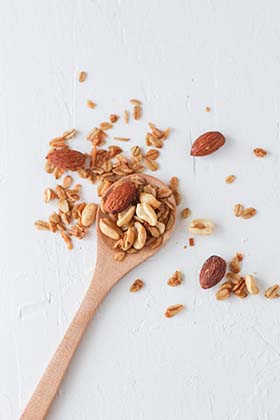
Clean labels: a clean break for bakeries
How clean-label goods with simple ingredients are maintaining popularity and profit: “I’m going to start eating cleaner.”
How clean-label goods with simple ingredients are maintaining popularity and profit: “I’m going to start eating cleaner.”
The balance between having better-for-you, clean-label products with simpler ingredients and, at the same time, the benefits of a long shelf-life can be found in compiling cleaner fillings, minimizing the use of preservatives and additives, while at the same time maintaining shelf-life properties.
US-based company Fiberstar agreed to allow Givaudan to commercialize and use Fiberstar’s natural, plant-based texturizing ingredient Citri-Fi®. The collaboration will expand Givaudan’s Taste & Wellbeing portfolio while extending Fiberstar’s geographic footprint.
At 6.78% CAGR, the market for clean-label ingredients is anticipated to hit USD 68.57bn by 2028, says Brandessence Market Research. The global market for this segment was evaluated at USD43.32bn in 2021.
Bühler partnered with Austrian start-up Selectum to provide a new, healthy and CO2-neutral snack. Selectum launched Paddies, crunchy wafer pillows with a creamy dip inside at the end of 2019.
Ingredients specialist KRÖNER-STÄRKE developed a cream-like filling for bakery and confectionery products. It has a long shelf life and no artificial ingredients.
The Southeast Asia bakery products market was valued at USD 13,470.18 million in 2020 and is projected to grow at a CAGR of 7.67% from 2021 to 2026, according to research by ResearchAndMarkets.com.
Pea protein ingredient sales are poised to reach a total of USD 1.25 Bn in 2021, according to an estimate made by Future Market Insight (FMI). Sales in the bakery sector are expected to reach USD 341.1 Mn.
AAK introduces a range of fats for chocolate and confectionery applications that use premium caramel, AKOMEL™. It is a portfolio of clean-label and plant-based fats obtained from sustainable sources, which are also available in non-hydrogenated, non-trans and low-saturated fat options.
In the last five years, organic and free-from gluten sweet biscuits have seen the biggest growth in Western Europe. Consumers look for more reduced sugar and on-the-go snacks. This trend is very similar in the savory biscuits category, as consumers are seeking healthier alternatives.
Many bakeries use other cereals and pseudo-cereals such as amaranth, quinoa and buckwheat, looking to add new sensory experiences to their range.
Consumers increasingly favor better-for-you products and their additional spare time at home has changed the way they handle eating occasions.

